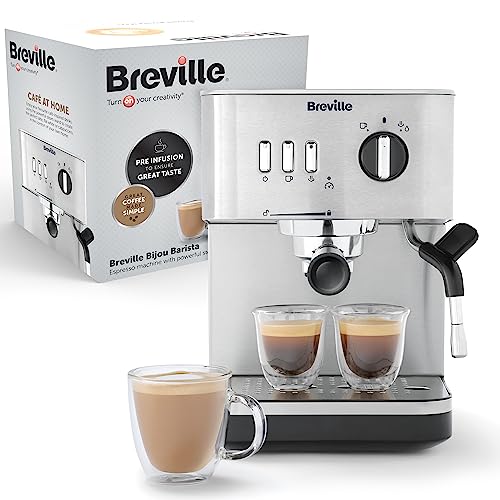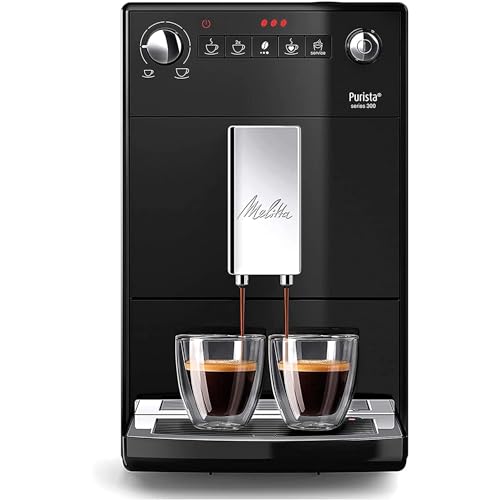Five Things You Didn't Know About Stainless Steel Espresso Machines
페이지 정보

본문
The Art of Italian Espresso Machines: A Brewed Tradition
Italian espresso machines are not just devices; they are an integral part of Italy's abundant coffee culture, representing a mix of artistry, engineering, and style. Coffee enthusiasts around the globe acknowledge the importance of high-quality espresso, a staple of Italian life and cuisine. This post checks out the history, mechanics, types, and aspects to consider when purchasing an Italian espresso machine, reflecting the depth of this beloved drink and its developing techniques.

History of Espresso Machines
The espresso machine's evolution dates back to the early 20th century in Italy, where coffee was not simply a beverage but an essential social routine. The preliminary efforts to brew espresso begun with basic, stove-top designs, slowly developing into complex machines that could replicate the perfect brew.

- 1901-- The First Espresso Machine: The first steam-powered espresso machine, understood as the "Ideale," was developed by Luigi Bezzera. This machinery marked a turning point in espresso developing.
- 1938-- The Lever Machine: The intro of the lever machine made it easier to manage the pressure utilized in espresso extraction, improving flavor consistency.
- 1947-- The Automatic Machine: Reaching more customers, Gaggia launched the very first automatic espresso machine, additional popularizing espresso bars.
- 2007-- The Digital Age: Technological improvements led to the birth of fully programmable machines, allowing users to tailor their brewing settings to attain an individualized coffee experience.
Key Features of Italian Espresso Machines
Italian espresso machines embody precision, workmanship, and innovation. Here are some key components that highlight their significance:
| Feature | Description |
|---|---|
| Boiler Type | Identifies how heat is produced and kept. Common types include single boiler, dual boiler, and heat exchanger. |
| Group Heads | Where the coffee is brewed; commercial machines often have multiple group heads for performance. |
| Pressure Control | Essential for attaining the ideal espresso; most machines operate at 9 bars of pressure. |
| Frothing Capabilities | The steam wand enables for milk frothing, important for beverages like cappuccino and latte. |
| Construct Quality | The materials used (stainless-steel, brass, etc) influence resilience and heat retention. |
Kinds Of Italian Espresso Machines
Choosing the best machine depends upon user preferences, budget, and intended use. Below are the primary kinds of Italian espresso machines:
Manual Espresso Machines
- Pros: Offer full control over the developing procedure, permitting for a customized touch.
- Cons: Require ability and practice, can be labor-intensive.
Semi-Automatic Machines
- Pros: Provide a balance between automated and manual procedures; users manage water flow.
- Cons: Can have a steeper learning curve than totally automatic machines.
Totally Automatic Machines
- Pros: Simplify the brewing process with push-button operations; perfect for beginners.
- Cons: May compromise some of the subtleties of manual developing.
Super-Automatic Machines
- Pros: Grind, tamp, brew, and froth automatically; convenient for hectic way of lives.
- Cons: Less control over the developing variables, potential for a less authentic espresso experience.
Buying Guide: Factors to Consider
Selecting the perfect Italian espresso machine can be daunting, but thinking about the following aspects can streamline the decision-making procedure:
- Budget: Italian espresso machines vary from affordable to high-end designs, so set a budget upfront.
- Usage Frequency: Evaluate how often you will use the machine; everyday users might desire a more durable alternative.
- Space: Measure your kitchen area or counter space; some machines can be big and require enough clearance.
- Maintenance: Consider ease of cleansing; machines with detachable parts or built-in cleaning functions might reduce maintenance.
- User Skill Level: Beginners may choose totally or semi-automatic machines, while experienced baristas can handle manual machines.
- Brand name Reputation: Research brand names understood for quality, such as Breville, Gaggia, and La Marzocco.
Popular Italian Espresso Machine Brands
Italian craftsmanship is renowned for producing some of the best espresso machines worldwide. Here are top brands worth thinking about:
- Gaggia: Known for its home espresso machines and cost.
- La Marzocco: A superior brand understood for its commercial-grade machines and innovative innovation.
- Rancilio: Renowned for its long lasting construct and professional-quality machines suitable for home and commercial use.
- Sage/Breville: Offers advanced features and easy to use styles, perfect for both amateurs and lovers.
FAQs
What is the distinction in between espresso and regular coffee?
Espresso is a focused coffee brewed by requiring hot water through finely-ground coffee under pressure. It has a thicker consistency, richer taste, and higher caffeine concentration than routine coffee.
Can I make milk-based drinks with an espresso machine?
Yes, many Italian espresso machines feature a steam wand to froth milk for beverages like cappuccinos, lattes, and macchiatos.
How typically should I clean my espresso machine?
Routine upkeep is necessary. Generally, an extensive cleaning is recommended every couple of weeks, while descaling must be done every 1 to 3 months, depending upon water firmness.
What is the perfect pressure for brewing espresso?
The ideal pressure for brewing espresso is around 9 bars. This pressure guarantees the optimum extraction of flavors from the coffee grounds.
Are more pricey machines worth the investment?
Higher-end machines frequently make use of much better materials and technology, providing enhanced toughness and more consistent outcomes. For serious coffee enthusiasts, buying a great machine can elevate the espresso experience significantly.
Italian espresso machines are far more than simple developing devices; they are a celebration of a cultural custom that has affected coffee intake worldwide. With various models readily available to fit any user's needs-- ranging from amateurs to experienced baristas-- there is an Italian espresso machine completely matched for everyone. As you start your espresso journey, understanding the history, mechanics, and alternatives will improve your experience and gratitude for this time-honored drink. Whether you seek to recreate a café ambiance in the house or refine your brewing technique, these machines are capable of providing unforgettable cups of espresso decorated with the rich history of Italian coffee culture.
- 이전글You'll Never Be Able To Figure Out This Discounted Loveseats's Tricks 25.08.07
- 다음글메벤다졸 구매대행하는 방법 - 러시아 직구 우라몰 ula24.top 25.08.07
댓글목록
등록된 댓글이 없습니다.
![정국토건[주]](http://jkst.co.kr/img/ci.svg)

![정국토건[주]](http://jkst.co.kr/img/ci_bt.svg)